Hailstones begin as water droplets that are carried upwards by powerful updrafts within a thunderstorm into colder regions of the storm cloud. These droplets freeze and can continue to grow as additional water freezes onto them, layer by layer. Once the updraft can no longer support the weight of the hailstone, it falls to the ground as hail.
Hail can range in size from small pea-sized shapes to larger golf ball-sized ones. When hailstones plummet to the ground during a storm, they can cause significant damage to roofs.
The severity of hail damage depends on several factors, including the size and density of the hailstones, the angle and velocity at which they strike the roof, and the type of roofing material being impacted.
Roof Inspections: The Best Way To Assess Hail Damage
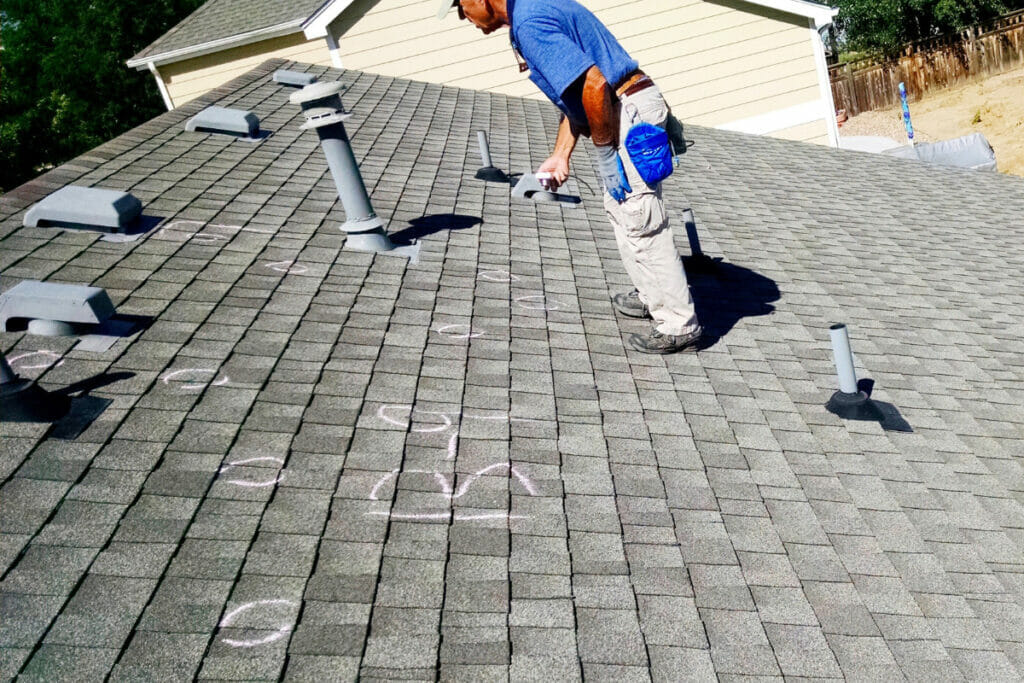
After a hailstorm, it is crucial to conduct a thorough inspection of your roof to assess the extent of damage. Identifying and addressing hail damage promptly can prevent further issues.
Before inspecting your roof, ensure your safety by waiting for favorable weather conditions and using appropriate personal protective equipment (PPE) such as gloves and sturdy footwear.
Exercise caution when climbing ladders or walking on the roof to avoid accidents or falls. If you are not comfortable or experienced with roof inspections, it is recommended to hire a professional roofing contractor.
How Hail Can Cause Damage To Roofing Materials
The roof is the topmost layer of your home, and therefore, the first line of defense against the forces of Mother Nature. Hail damage can manifest in various forms, depending on the roofing materials in place. Some common types of hail damage include:
Asphalt Shingles
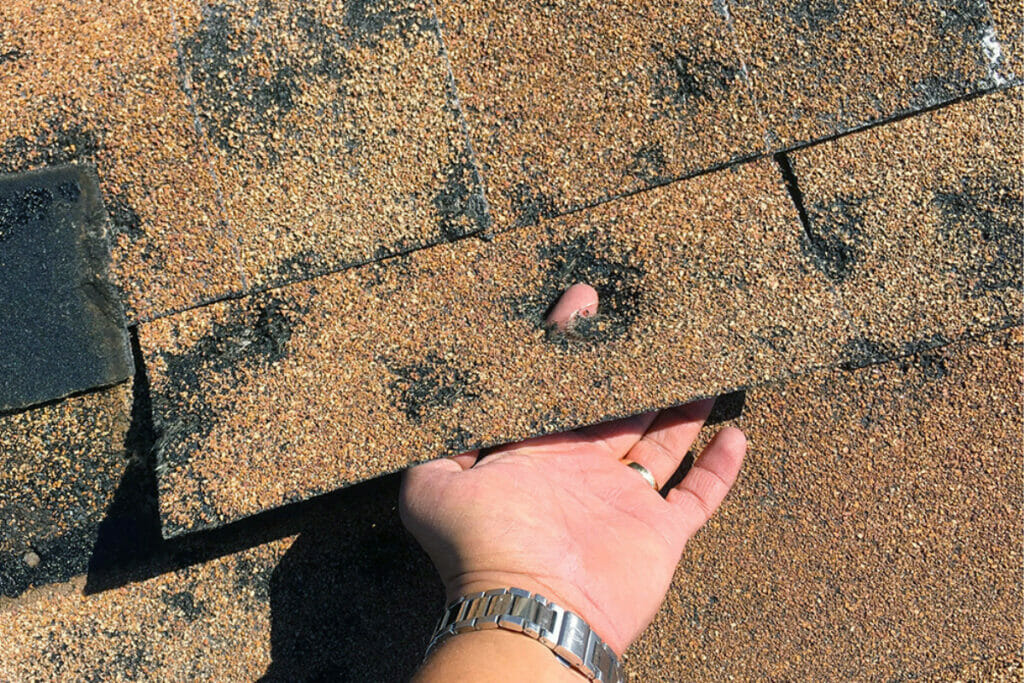
One of the ways in which hail storms can damage your asphalt shingle roof is by denting and tearing the shingle layers.
So if you have an asphalt shingle roof, it’s important to ensure that you are regularly inspecting your roofing system.
Metal Roofs
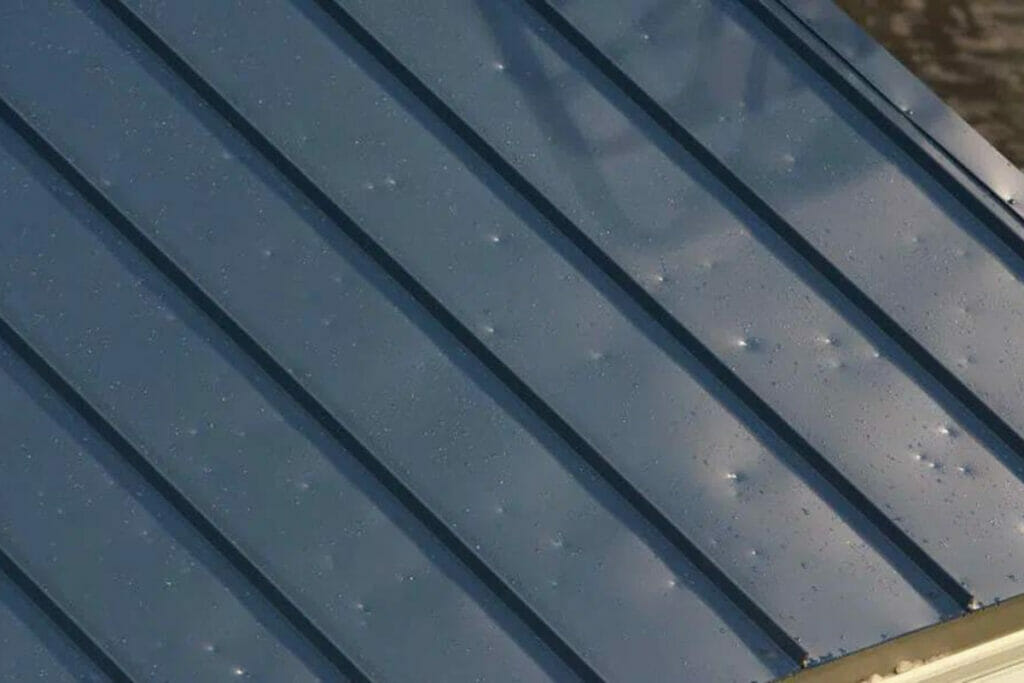
Hail not only damages asphalt roofing systems, but it can also damage durable metal roofing systems too. Here are some signs of hail damage to look for if you have a metal roof:
Dents On Metal Panels
Hailstones can cause dents and dimples on metal roofing panels. The force of the impact caused by hailstones can leave visible indents on the surface. This not only reduces the curb appeal of your roof, but also the structural integrity.
Punctures
Depending on the size and velocity of the hailstones, they can puncture or tear through the metal roofing panels. Punctures create openings in the metal, allowing water to penetrate through the panel and roof underlayment.
Protective Coating Damage
Metal roofs typically have protective coatings, such as paint or galvanized finishes, to enhance their resistance to corrosion and rust.
Hail impact can chip or scratch the protective coatings, exposing the underlying metal surface.
Also Read: 5 Key Features of Authentic Spanish-Style Metal Roofing
Tile Roofing System
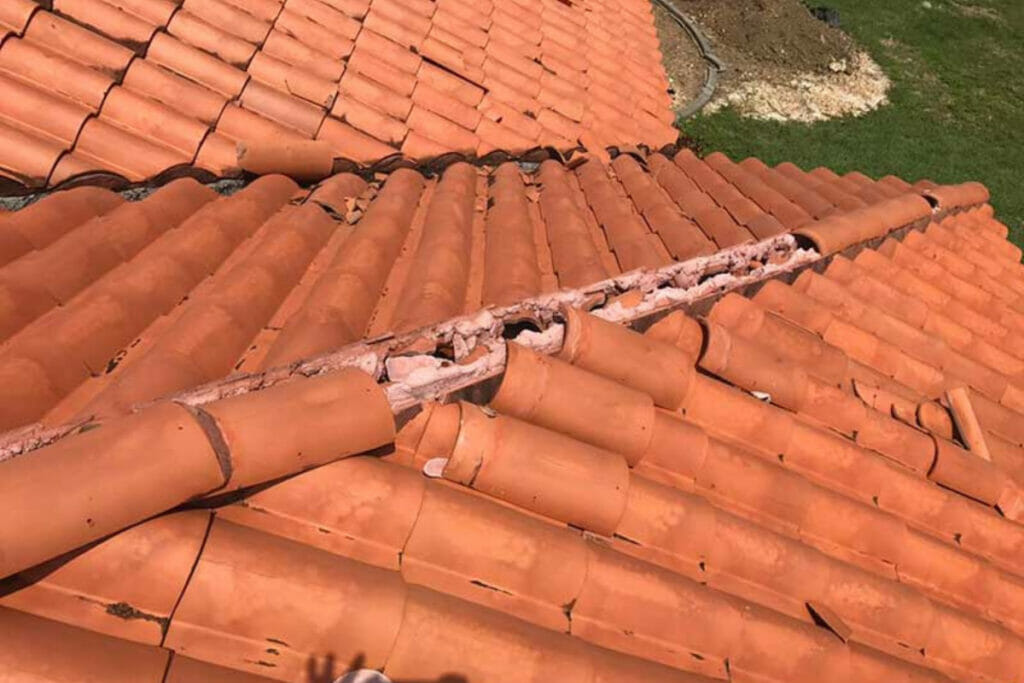
Cracks and Holes
Hailstones can cause cracks or fractures in clay or concrete tiles upon impact. In particular, hailstones that are larger than an inch can break the tiles if they are not installed properly.
Damage To The Roofing System
Clay and concrete tiles typically rely on an interlocking system to provide a secure, weather-resistant roof covering. Hail damage can disrupt the interlocking system, affecting the ability of the tiles to create a watertight seal.
Also Read: Hail Damage Roof Repair Cost In 2024
Damage To Other Parts Of Your Home
Gutters and Downspouts
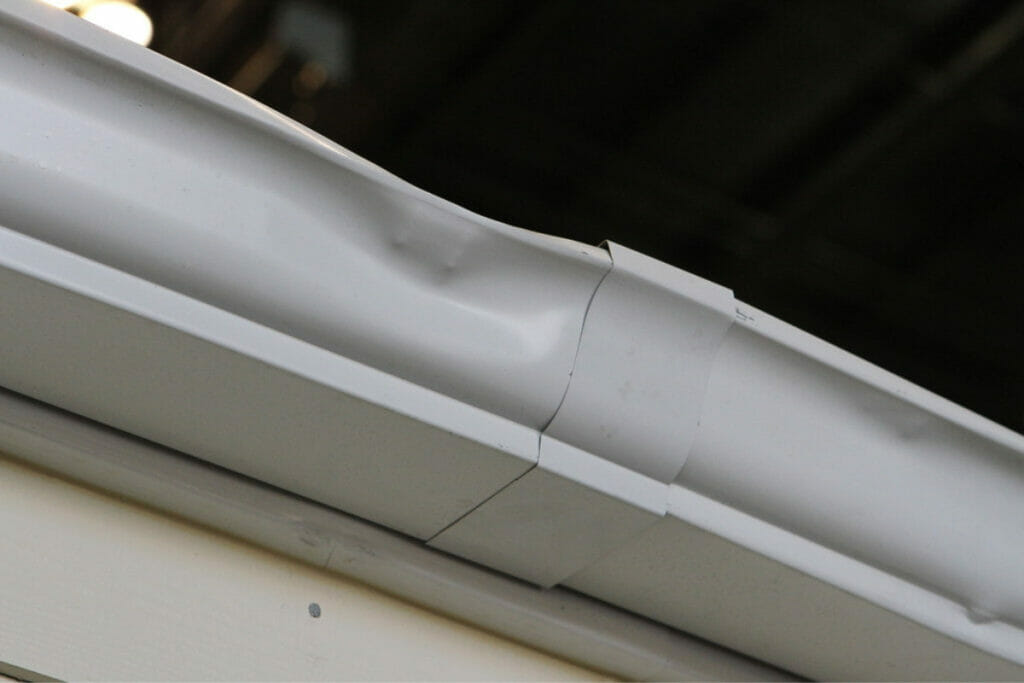
In addition to the direct impact on roofing materials, hailstorms can cause damage to gutters, downspouts, and metal flashing, which are vital components of a roof’s drainage and protection system. These elements play a crucial role in channeling water away from the roof and preventing it from getting into the structure. When hailstones strike these components, they can suffer various forms of damage.
Home Siding
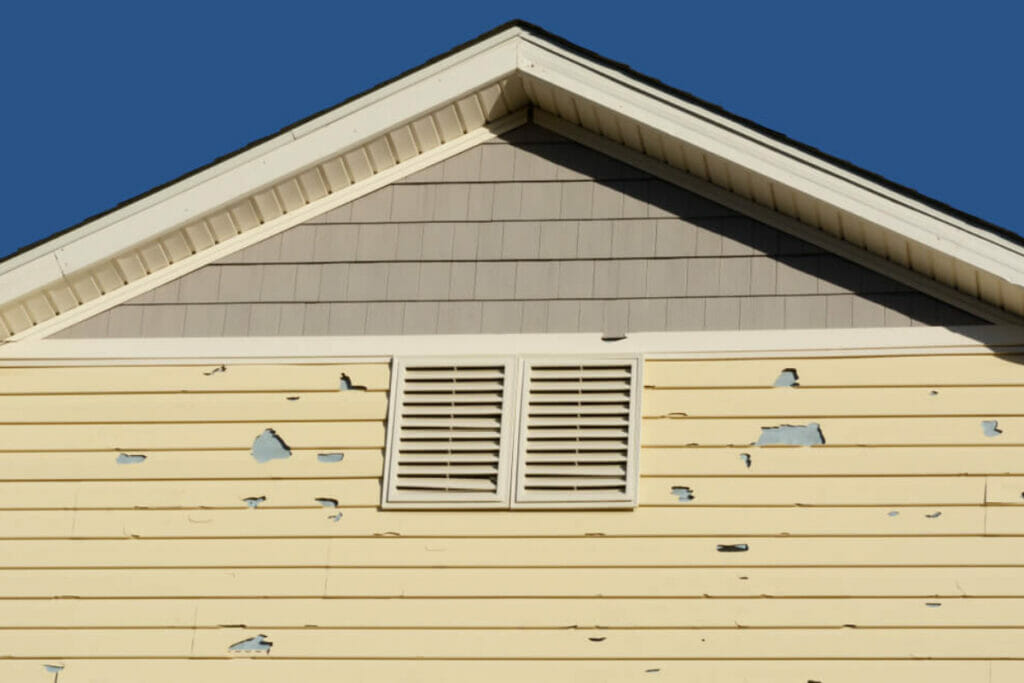
Home siding is a material that acts as a protective barrier for your home. Siding is manufactured from various materials, with the most common options being vinyl, fiber cement, and wood. Hailstones can affect your siding, and intense hailstorms can cause dents, or cracks in the siding, reducing the overall appearance of your property.
Now that you know what signs signify hail damage, it’s time to move on to restoring your roofing system. The following steps will help you to handle things after your roof has suffered hail damage.
Documenting Hailstorm Damage
Documenting the damage is an essential step in the process of assessing hail damage to your roof. It involves capturing clear and detailed photos to create a record of the roof damage.
By documenting the hail damage, you’ll have tangible evidence to support your assessment, aid the contractor in their evaluation, and strengthen your insurance claim. It ensures transparency and accuracy throughout the process.
If you’re not sure how to move ahead with the process, then you can start by keeping the following things in mind:
- Take clear photographs or videos of the hail damage, focusing on the affected areas. Zoom in on specific areas to capture the finer details of the damage.
- Focus on dents, cracks, missing shingles, or any other visible signs of damage.
- Ensure the photos are well-lit and show the damage from different angles. It’s also helpful to include a reference object like a ruler to provide scale.
If you’re unsure about the extent of the damage or need professional assistance, consider hiring a roofing contractor or a property inspector to assess and document the hail damage. They have experience with documenting storm damage and can even help you with the insurance claim process.
Contact Your Insurance Company
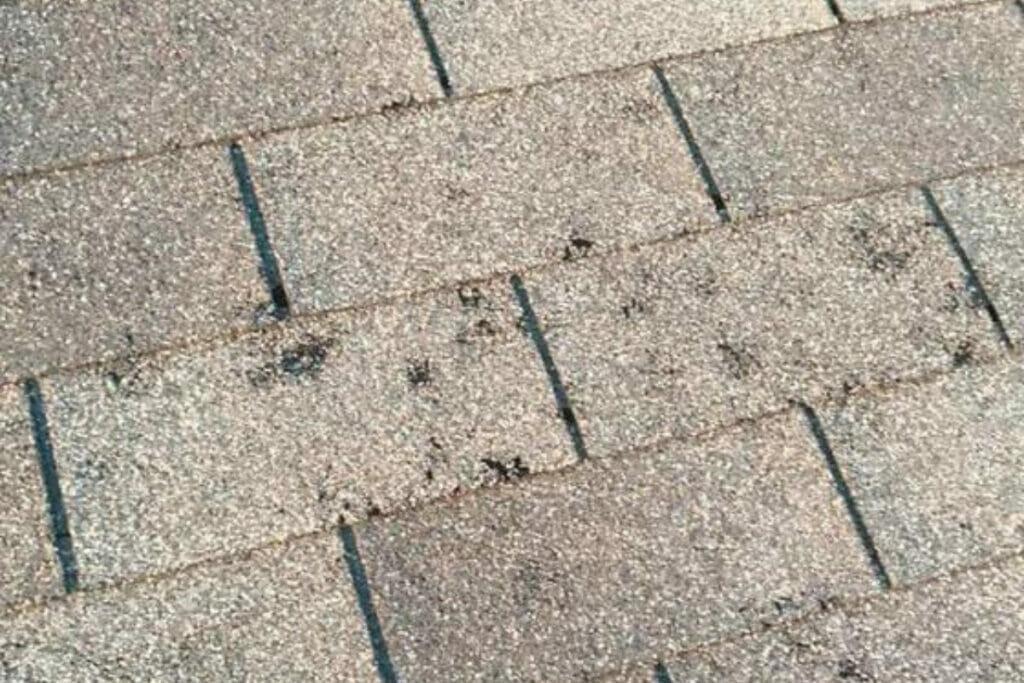
Contacting your insurance company is an important step after experiencing hail damage to your property. Usually, when a hailstorm or other forms of harsh weather hit your property, it can cause extensive damage to your roof. Most of the time you will require a complete roof replacement which can be expensive.
Most homeowners insurance covers hail damage. You should familiarize yourself with your policy to understand the coverage, deductibles, and any specific provisions related to hail damage. This will help you know what to expect when filing a claim.
Contact A Roofing Company
Repairing hail damage to a roof can be quite a task, and it will not be easy for you to do the job if you do not have experience in roofing. In such cases, it is best to contact a professional roofing company.
These contractors have the necessary expertise and experience to assess and repair hail damage. They understand the intricacies of different roofing materials and can provide the most effective solutions.
Roofing companies are also well-versed in local building codes and regulations specific to your area. They understand the requirements for roofing materials, installation techniques, and other relevant factors.
Best Roof Storm Damage Repair Service In Georgia
Handling hail damage to your roof in Georgia requires a systematic approach to ensure proper repairs and maximize insurance coverage. To ensure that your roof gets back to its best, trust the team at Division Kangaroof.
We have years of experience dealing with roof hail damage. We are the experts in Georgia when it comes to roof restoration and offering the best storm damage roof repair services.
We have a team of skilled workers who can complete the repairs promptly, minimizing disruption to your daily routine.
If you’ve recently experienced hail damage to your roof in Georgia, don’t delay in taking action. Contact our team today at (706) 778-3516 and we will be there at the earliest.


